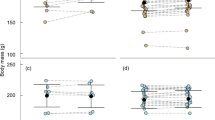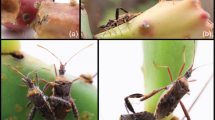Abstract
Elucidating interrelationships between rate of growth and sexual maturation in unpredictable or stochastic environments could increase our understanding of life-history strategies of small mammals. It has been hypothesized that species living in environments where food availability is unpredictable might become sexually mature at smaller sizes and channel excess energy into reproduction rather than into compensatory growth. We explored this hypothesis in female cotton rats (Sigmodon hispidus) by feeding variable levels of dietary protein during early postweanling development (14–45days of age) and monitoring compensatory growth and fitness after nutritional rehabilitation (45–100days of age). Growth was optimum in females fed diets containing 16% protein, with minimal requirements estimated to be 12%. Females fed diets containing <12% protein exhibited suppressed development, including delayed puberty. However, these nulliparous females demonstrated compensatory growth during the early period of nutritional rehabilitation, regardless of the severity of previous restrictions in protein. No long-lasting fitness consequences from postweanling nutritional restrictions were apparent as we observed no difference in date of conception, body mass of dams at parturition, litter size, or rate of growth of neonates. We offer a possible adaptive explanation for this observed plasticity in growth and development.
Similar content being viewed by others
References
Arendt, J.D. (1997) Adaptive intrinsic growth rates: and integration across taxa. Quart. Rev. Biol. 72, 149–177.
Berven, K.A. (1982) The genetic basis of altitudinal variation in the wood frog Rana sylvatica. I.An experimental analysis of life history traits. Evolution 36, 962–983.
Brody, S. (1945) Bioenergetics and Growth. Reinhold Publishers, New York, NY.
Cameron, G.N. and Spencer, S.R. (1981) Sigmodon hispidus. Mammalian Species 158, 1–9.
Cameron, G.N. and McClure, P.A. (1988) Geographic variation in the life history traits of the hispid cotton rat (Sigmodon hispidus). In M.S. Boyce (ed.) Evolution of Life Histories, Theory and Patterns from Mammals. Yale University Press, New Haven, CT, pp. 33–64.
Caswell, H. (1983) Phenotypic plasticity in life–history traits: demographic effects and evolutionary consequences. Am. Zool. 23, 35–46.
Goertz, J.W. (1964) The influence of habitat quality upon density of cotton rat populations. Ecol. Monogr. 34, 359–381.
Hastings, A. and Caswell, H. (1979) Environmental variability in the evolution of life history strategies. Proc. Nat. Acad. Sci., USA 76, 4700–4703.
Hellgren, E.C. and Lochmiller, R.L. (1997) Requirements for reproduction in the hispid cotton rat (Sigmodon hispidus): a re–evaluation. J. Mamm. 78, 691–694.
Hickman, J.C. (1975) Environmental unpredictability and plastic energy allocation strategies in the annual Polygaonum cascadense (Polygonaceae). J. Ecol. 63, 689–701.
Hicks, C.R. (1993) Fundamental Concepts in the Design of Experiments. Fourth edition. Saunders College Publishing, New York, NY.
Hillesheim, E. and Stearns, S.C. (1991) The responses of Drosophila melanogaster to artificial selection on body weight and its phenotypic plasticity in two larval food environments. Evolution 45, 1909–1923.
Hogstedt, G. (1980) Evolution of clutch size in birds: adaptive variation in relation to territory quality. Science 210, 1148–1150.
Ims, R.A. (1997) Determinants of geographic variation in growth and reproductive traits in the root vole. Ecology 78, 461–470.
Korpimaki, E. (1990) Low repeatability of laying date and clutch size in Tengmalm's owl: an adaptation to fluctuating food conditions. Ornis Scad. 21, 282–286.
Kyriazakis, I. and Emmans, G.C. (1992) The growth of mammals following a period of nutritional limitation. J. Theor. Biol. 156, 485–498.
Labov, J.B., Huck, U.W., Vaswani, P. and Lisk, R.D. (1986) Sex ratio manipulation and decreased growth of male offspring of undernourished golden hamsters (Mesocricetus auratus). Behav. Ecol. Sociobiol. 18, 241–249.
Langley, A.K. and Shure, D.J. (1988) The impact of climatic extremes on cotton rat (Sigmodon hispidus) populations. Am. Midl. Natur. 120, 136–143.
Lochmiller, R.L., Whelan, J.B. and Kirkpatrick, R.L. (1982) Postweaning energy requirements of juvenile pine voles, Microtus pinetorum. Am. Midl. Natur. 108, 412–415.
Martin, T.E. (1987) Food as a limit on breeding birds: a life–history perspective. Ann. Rev. Ecol. Syst. 18, 453–487.
Mattingly, D.K. and McClure, P.A. (1985) Energy allocation during lactation in cotton rats (Sigmodon hispidus) on a restricted diet. Ecology 66, 928–937.
McClure, P.A. (1981) Sex–biased litter reduction in food–restricted wood rats (Neotoma floridana). Science 211, 1058–1060.
McClure, P.A. (1987) The energetics of reproduction and life histories of cricetine rodents (Neotoma floridana and Sigmodon hispidus). Symp. Zool. Soc. Lond. 57, 241–258.
McClure, P.A. and Randolph, J.C. (1980) Relative allocation of energy to growth and development of homeothermy in the eastern wood rat (Neotoma floridana) and hispid cotton rat (Sigmodon hispidus). Ecol. Monogr. 50, 199–219.
Meyer, B.J. and Meyer, R.K. (1944) Growth and reproduction of the cotton rat, Sigmodon hispidus, under laboratory conditions. J. Mamm. 25, 107–129.
National Research Council (1995) Nutrient Requirements of Laboratory Animals. Fourth edition. National Academy Press, Washington, DC.
Neter, J., Wasserman, W. and Kutner, M.H. (1990) Applied linear Statistical Models: Regression, Analysis of Variance, and Experimental Designs. Third edition. Irwin Press, Boston, MA.
Ots, I. and Horack, P. (1996) Great tits Parus major trade health for reproduction. Proc. Roy. Soc. Lond. B 263, 1443–1447.
Part, T., Gustafsson, L. and Moreno, J. (1992) Terminal investment and sexual conflict in the collared flycatcher (Ficedula albicollis). Am. Natur. 140, 868–882.
Pianka, E.R. (1976) Natural selection of optimal reproductive tactics. Am. Zool. 16, 775–784.
Pine, A.P., Jessop, N.S. and Oldham, J.D. (1994) Maternal protein reserves and their influence on lactational performance in rats. Brit. J. Nutr. 71, 13–27.
Randolph, J.C., Cameron, G.N. and McClure, P.A. (1995) Nutritional requirements for reproduction in the hispid cotton rat, Sigmodon hispidus. J. Mamm. 76, 1113–1126.
Randolph, P.A., Randolph, J.C., Mattingly, K. and Foster, M.M. (1977) Energy costs of reproduction in the cotton rat Sigmodon hispidus. Ecology 58, 31–45.
SAS Institute, Inc. (1988) SAS/STAT User's Guide, Release 6.03 Edition: Statistics. SAS Institute, Inc., Cary, NC.
Schetter, T.A. (1996) Examination of the nitrogen limitation hypothesis in populations of cotton rats (Sigmodon hispidus). M.S. Thesis, Oklahoma State University, Stillwater, OK.
Schetter, T.A., Lochmiller, R.L., Leslie, D.M., Engle, D.M. and Payton, M.E. (1998) Examination of the nitrogen limitation hypothesis in non–cyclic populations of cotton rats (Sigmodon hispidus). J. Anim. Ecol. 67, 705–721.
Sikes, R.S. (1995) Maternal response to resource limitations in eastern woodrats. Anim. Behav. 49, 1551–1558.
Sikes, R.S. (1996a) Maternal investment tactics of grasshopper mice in response to postnatal food restriction. J. Mamm. 77, 1092–1101.
Sikes, R.S. (1996b) Effects of maternal nutrition on post–weaning growth in two North American rodents. Behav. Ecol. Sociobiol. 38, 303–310.
Sikes, R.S. (1998) Tradeoffs between quality of offspring and litter size: differences do not persist into adulthood. J. Mamm. 79, 1143–1151.
Slade, N.A., McMurry, S.T. and Lochmiller, R.L. (1996) Habitat differences in mass–specific litter sizes of hispid cotton rats. J. Mamm. 77, 346–350.
Smith–Gill, S.J. (1983) Developmental plasticity: developmental conversion versus phenotypic modulation. Am. Zool. 23, 47–55.
Smith–Gill, S.J. and Breven, K.A. (1979) Predicting amphibian metamorphosis. Am. Natur. 113, 563–585.
Stearns, S.C. (1982) The role of development in the evolution of life histories. In Bonner, J.T. (ed.) Evolution and Development. Springer–Verlag Publishers, New York, NY, pp. 237–258.
Stearns, S.C. (1992) The Evolution of Life Histories. Oxford University Press, New York, NY.
Tkadlec, E. and Zejda, J. (1995) Precocious breeding in female common voles and its relevance to rodent fluctuations. Oikos 73, 231–236.
Trivers, R.L. and Willard, D.E. (1973) Natural selection of parental ability to vary the sex ratio of offspring. Science 179, 90–92.
Wilson, P.N. and Osbourn, D.F. (1960) Compensatory growth after undernutrition in mammals and birds. Biol. Rev. 35, 324–363.
Author information
Authors and Affiliations
Corresponding author
Rights and permissions
About this article
Cite this article
Lochmiller, R.L., Ditchkoff, S.S. & Sinclair, J.A. Developmental Plasticity of Postweanling Cotton Rats (Sigmodon hispidus) as an Adaptation to Nutritionally Stochastic Environments. Evolutionary Ecology 14, 127–142 (2000). https://doi.org/10.1023/A:1011014814256
Issue Date:
DOI: https://doi.org/10.1023/A:1011014814256




